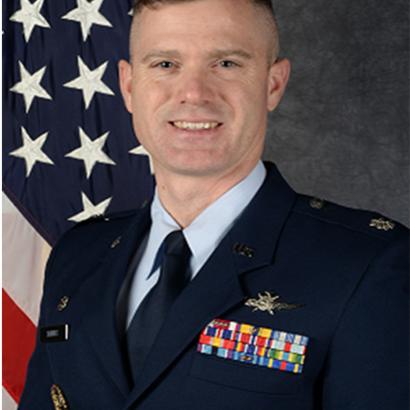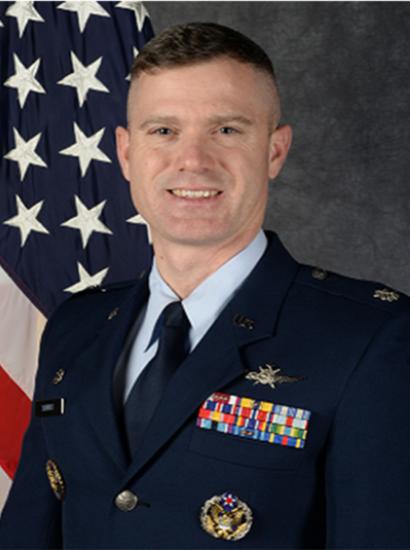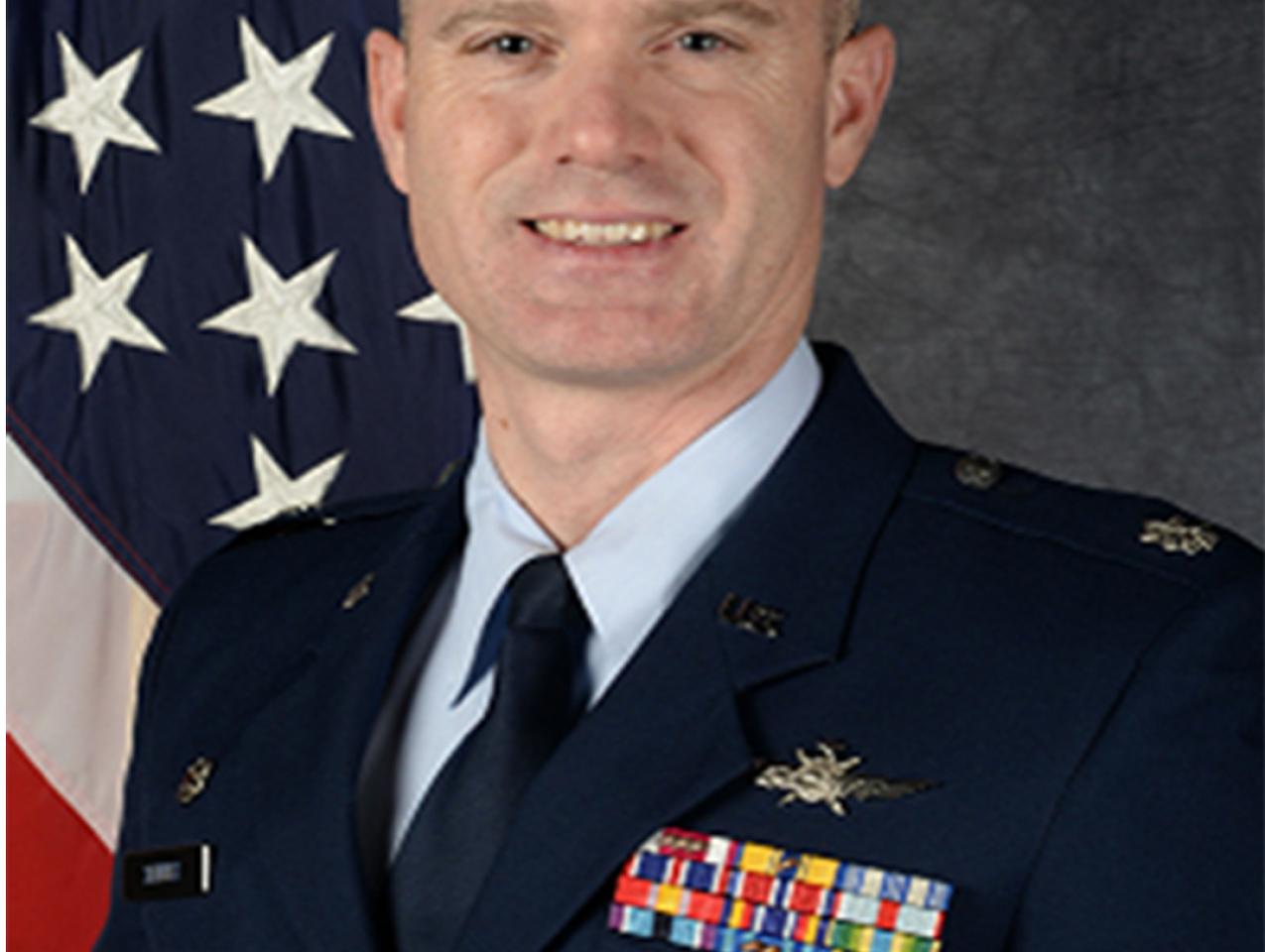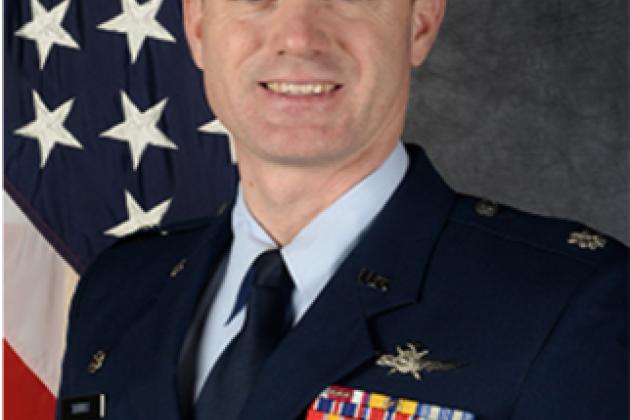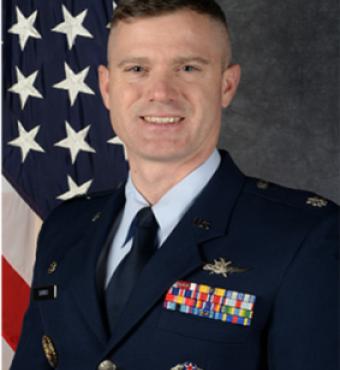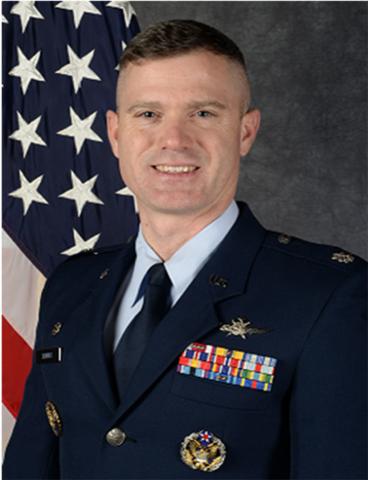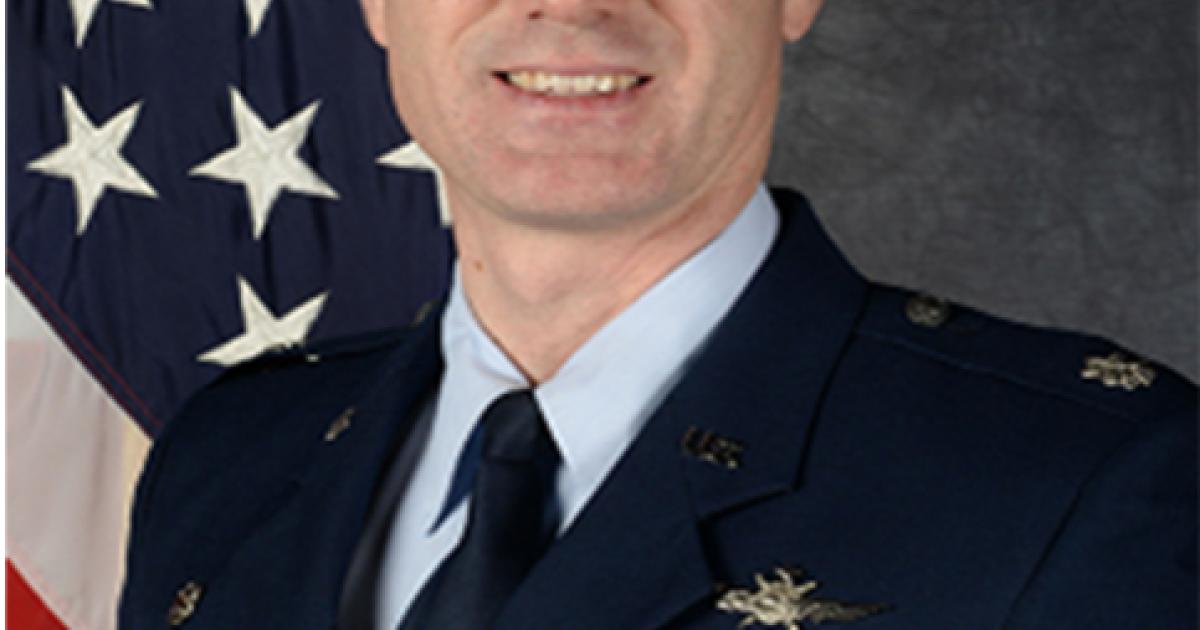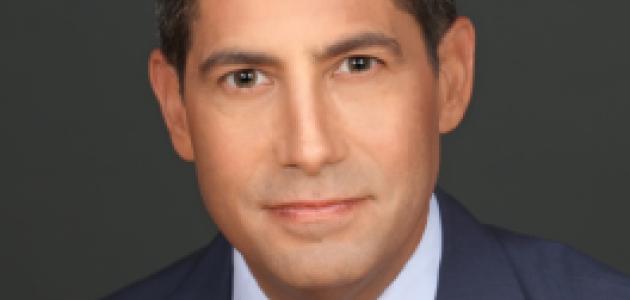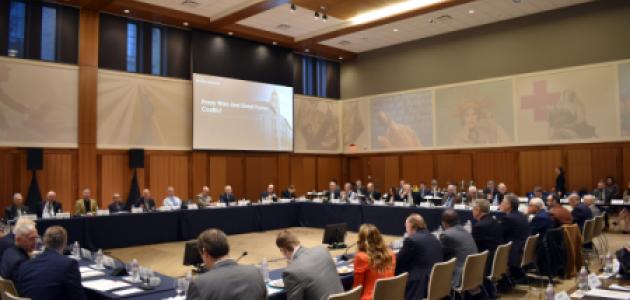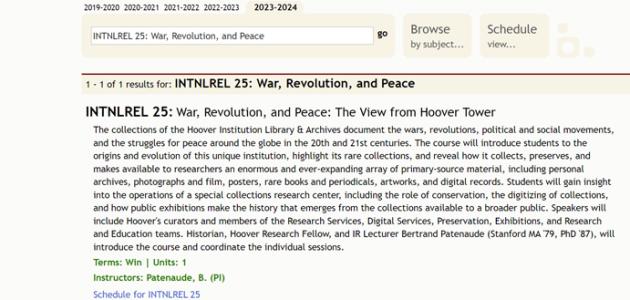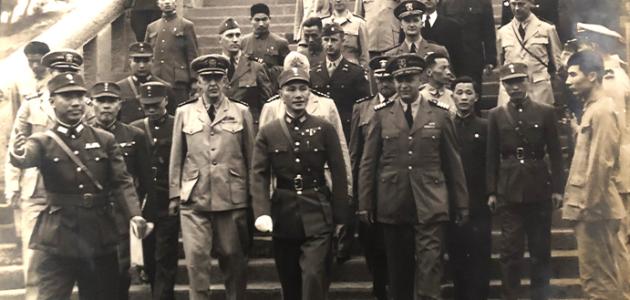
By Jonathan Movroydis
Lt. Col. Steven Skipper, representing the US Air Force, is a national security affairs fellow (NSAF) for the 2020–21 academic year at the Hoover Institution.
In this interview, Skipper talks about his career in the Air Force, specifically his service as commander of two communications squadrons, both in-garrison and deployed, overseeing some of the largest cryptological inventories in the entire Department of Defense while supporting intercontinental ballistic missile systems, as well as major war-fighting aircraft, including the U-2 Dragon Lady, the KC-10 tanker, F-15 Strike Eagle, F-22 Raptor, and unmanned aerial vehicles.
Skipper also discusses his assignment as a mission director for Air Force One during the George W. Bush and Barack Obama administrations, the “no fail” nature of the mission, and his fond memories of serving the forty-third and forty-fourth presidents of the United States.
Why did you join the US Air Force?
Based on the number of positive experiences early in life, specifically during my teen years, joining the military seemed to be the perfect fit. My family had a tremendous impact on me throughout high school, whether it was sports or life skills. They ensured that I had all the tools to succeed. As I entered college, my wife's grandfather, a retired Air Force officer who served during World War II and the Korean conflict, greatly influenced my future in the military. At the age of seventy-eight, he intrepidly tutored me through two calculus classes. During these intense math sessions, slide rule and all, he performed numerous calculations while sharing his life's journey in the Air Force and life writ large. It was truly the best of both worlds for me. In addition to these influences, the terrorist attacks occurring on September 11, 2001, further galvanized my decision to ultimately join the Air Force.
Will you tell us about your educational background?
Upon graduating from high school, I qualified for Georgia's generous “Helping Outstanding Pupils Educationally,” also known as the HOPE Scholarship. It’s a merit-based award program funded by the Georgia Lottery for education to support students who demonstrate high academic achievement. Through years of hard work and perseverance, I graduated with highest honors, ultimately earning a bachelor of science degree in management with concentration in information technology. Hence, my military career in cyberspace operations. Of special note, my wife’s grandfather also graduated from Georgia Tech in 1941. So you can see a little bit of a trend there, a special bond between the two of us.
What has been your career path as an Air Force officer?
The Air Force has provided me with an overflowing cauldron of opportunities. Serving on the air staff at the Pentagon armed me with valuable insight relative to portfolio management and associated budget programming. In this assignment, I oversaw and had a direct impact on the Air Force's software portfolio. During my time at the major command level, specifically in Pacific Air Forces command, located in Hawaii, I had the unique opportunity to advance critical and cutting-edge cyberspace capabilities throughout the region. America’s Pacific operations encompass about one-third of the earth’s surface. When we extend communications throughout that area, it's pretty significant.
I have also led teams of cyberspace airmen and support of combat operations throughout United States Central Command and have had the auspicious opportunity to serve in multiple leadership positions throughout the world.
Will you tell us about your role as commander of the Fifth Communications Squadron?
When I commanded the Fifth Communications Squadron, my team and I had a unique role in supporting not only the B-52 bombers but also ICBMs in the Ninety-first Missile Wing. We also managed the largest cryptologic inventory in the Air Force. What does that mean? Every time a bomber flies or a missile crew supports ICBM operations in the capsule across a vast missile field area, they’re securing their communications through cryptologic technology.
Also, our squadron provided an array of network services (i.e., email, secure communications, sensor control), which included responsibility over land mobile radio. Whether we were supporting B-52s and ICBMs, email and network connectivity, the nuclear enterprise, or land mobile radio, we were responsible for ensuring connectivity 24/7.
Will you also tell us about some of your other deployments, including Operation Enduring Freedom and the Combined Task Force Horn of Africa?
When I commanded the 380th Expeditionary Communications Squadron, we had close to two hundred airmen. This was a one-year deployment. During that time, we were responsible for supporting satellite communications from Germany to the Horn of Africa and to Afghanistan. We also maintained all the communication services at the base, where we supported multiple war-fighting platforms.
In addition, we were responsible for, again, cryptologic communications. We not only supported our own forces, but also our coalition partners as well. What was really intriguing about our position was the delicate relationship that we maintained with the host nation. I had direct engagements not only with the international military officers but also those who worked in commercial industry. There were times when we had meetings with them “outside the wire” to ensure that we were all “flying in formation” relative to communications in that area of operations.
Will you tell us about your work on post-tsunami relief?
During my time in Pacific Air Forces command, my team and I directly supported Operation Tomodachi to assist Japan with disaster relief following the 2011 earthquake and tsunami. I led a quick-response team in partnership with Fifth Air Force staff personnel at Yokota Air Force Base. As we rolled in, it became very apparent that communications served as a key link to ensuring humanitarian aid arrived commensurate with the speed of operational need. We deployed for two weeks, but again, the delicate nature of the US-Japanese relationship dictated that we do not overstep in helping our allies; we wanted to make sure that Japan was the face of the relief effort.
How did you become Air Force One director, and will you tell us about some of the highlights of that assignment?
In 2005, when I was a first lieutenant assigned to Eglin Air Force Base in Fort Walton Beach, Florida, Hurricane Katrina decimated parts of the Florida, Alabama, Mississippi, and Louisiana coastlines. In response, President Bush planned to visit the affected areas. At the time, I served as the wing executive officer for the installation commander. One late afternoon, I received a phone call from a lieutenant colonel assigned to the presidential airlift group requesting support for inbound aircraft to our installation at Eglin. Initially, I thought this was a prank by some of my fellow lieutenant friends. However, I quickly realized, from the facts that I received thereafter, this was indeed a true request for support from the presidential airlift group.
I knew the requests necessitated my absolute best effort. During a final visit to Eglin, the presidential pilot, who also served as the presidential airlift group commander, Col. Mark Tillman, offered me the opportunity to serve on his team. His wife, Eryn Tillman, is the Bechtel Associate Director of Media and Government Affairs here at Hoover.
That assignment required performing at the highest level every day. It was a no-fail mission. As mission director, I supported planning efforts of where the president would travel. We had not only planned for the trip itself, but also for any contingency operations that may unfold. You need a plan A, B, and C to be successful. During times that the president was traveling, we had to remain on 24/7 watch to serve as a link between Air Force One and other key support entities in Washington, DC.
I think one of my fondest memories was President Bush's last flight to North Carolina before his second term ended. It was a quick flight, but I remember having breakfast onboard in the crew galley with Colonel Tillman, Col. Scott Turner, and all the other leaders in our organization that were on the trip. After landing, we had a special farewell for President Bush and his entire family in the hangar. Colonel Tillman presented him with a window from Air Force One that was engraved. What was even better, I think, was that we had the opportunity to hang out with President Bush. He reserved time to shake our hands and take photos with us. It was a really special moment in my Air Force career.
What was your previous position before coming to the Hoover Institution?
I was at the Air Force Personnel Center, which essentially serves as the clearinghouse for all matters that have to do with airmen’s careers and their needs, whether it's an assignment, promotion, or retirement. I was the nonrated operations branch chief, which meant I provided support to those forty thousand airmen assigned to various airfield-oriented specialties, including cyber, intel, special operations, space, missile, and other career fields.
My responsibility was to support these officers’ career success. One of my most memorable moments at the personnel center was supporting the creation of Space Force within the department of the Air Force. Through that effort, we identified qualified individuals to become part of the initial cadre. Within the last year, Space Force has grown exponentially.
What has been your research focus during the course of this fellowship?
From a research perspective, I focus primarily on cyber innovation and national security, and examine methods that are intended to expedite how the Air Force trains, tracks, and manages cyberspace talent. The Air Force simply does not have enough personnel to accomplish its goals. So, we have to be very judicious about how we manage and deploy our talent.
There is no question that America’s capable and talented airmen courageously serve as the lifeblood to the greatest Air Force in the world. To sustain an air force that America requires, our leaders need to continue accelerating the removal of stultifying bureaucratic barriers. I am asking questions such as, “How does the Air Force accelerate change while remaining capable to fight another great power?” “How does the service overhaul the way it educates its personnel to meet new challenges?” Over the last several years, the Air Force and its industry partners have made incredible strides toward designing and establishing entities focused on accelerating innovation.
In your assessment, what are the opportunities and challenges for the United States in the cyber domain?
It used to be that the Department of Defense was among the preeminent innovators in technological innovation. However, in recent times, it is the private sector (Tesla, SpaceX, Defense Innovation Unit) that is far surpassing what DOD can accomplish. I believe we need to continue to strengthen the relationship between industry partners and the DOD, especially if we are to outpace our adversaries in the realm of great power competition.
During your time at Hoover, have there been any fellows who made you think differently about the issues you have been working on or thinking about?
My goal is to take all that I've learned during my time at Hoover and share it with my subordinates, peers, and superiors. Mending domestically oriented relationships while steadfastly affirming the country's amiable strengths to allies and adversaries are very necessary first steps oriented toward revitalizing the American spirit. Ronald Reagan once said, "There's no right or left. There's only up or down."
The Hoover Institution is a unique and special place. I've been constantly edified during my time here, especially in my weekly interaction with the other national security affairs fellows and our Stanford undergraduate mentees taking the Public Policy 100 course.
Bob Oster, who with his wife, Marion, generously supports the fellowship, has gone out of his way to offer what I would consider priceless perspectives on a wide spectrum of topics. Amy Zegart and her incredible staff have been phenomenal. She has challenged us through her scholarly encouragement to explore today's most difficult topics, whether it's intelligence, cyber, or beyond. We have also had numerous opportunities to engage with Condoleezza Rice, Jim Mattis, H. R. McMaster, Jim Ellis, William Perry, Shelby Steele, and the late George P. Shultz. There is a long list of iconic Hoover-based scholars known throughout the world that we have interfaced with just over the last six months, and it's just been incredible. This experience has been the honor of a lifetime, and it will be very difficult to replicate it in the future.
What does leadership mean to you?
Leadership is all about people. I have a simple acronym that I've shared in other types of engagements when discussing leadership principles: W-I-S-E. “W” is win. It's not just winning accolades, but it's about winning in life. “I” is innovate. Find ways to think beyond the immediate term and look for opportunities to constantly improve in all aspects of life. “S” is service. Whether it's service to country, community, or family, find a way to serve and make society better. Finally, E is for “excellence.” Excellence is one of the Air Force’s core values, a simple yet important term that encourages all airmen to do their very best in all pursuits.







